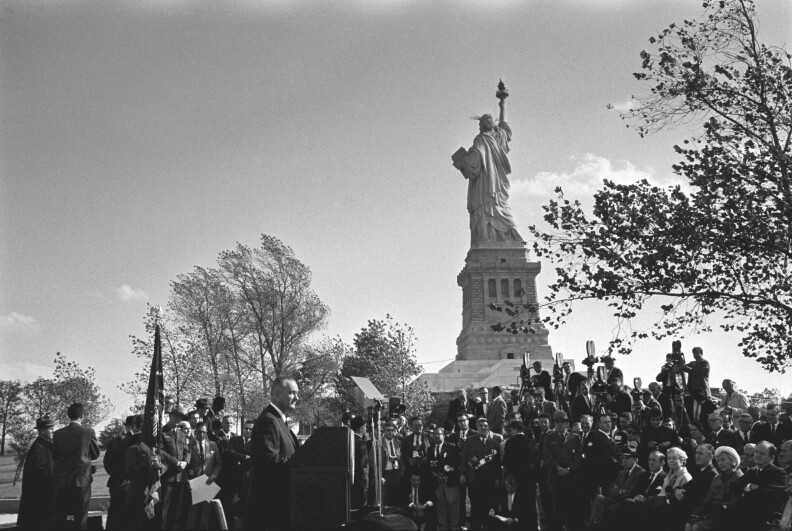Fifty years ago this weekend, President Lyndon B. Johnson signed into law the Immigration and Nationality Act, transforming the nation's immigration policy for generations to come.
In many ways, the current debate over immigration has its roots in this landmark legislation. Signed in 1965, during the upheaval in the US over civil rights and anti-communist conflict abroad, the legislation aimed to overhaul an outdated system based on quotas and boost the US image overseas.
In many ways it gets to the core of our national identity: who are we as Americans? What are the rights and responsibilities of a citizen?
For a look at how this influential law came to be and what it means for the future of US immigration policy, we're joined by two guests:
Erika Lee is director of the Immigration History Research Center at the University of Minnesota and author of The Making of Asian America.
Marielena Hincapié is director of the National Immigration Law Center, a legal and immigrant rights group.



